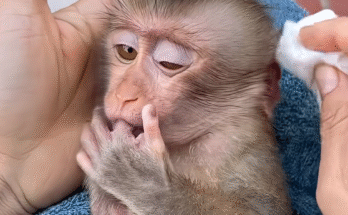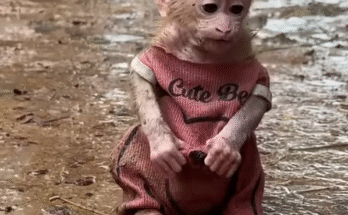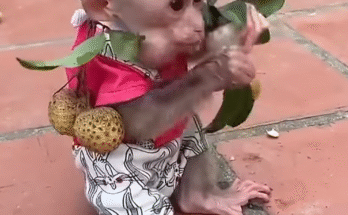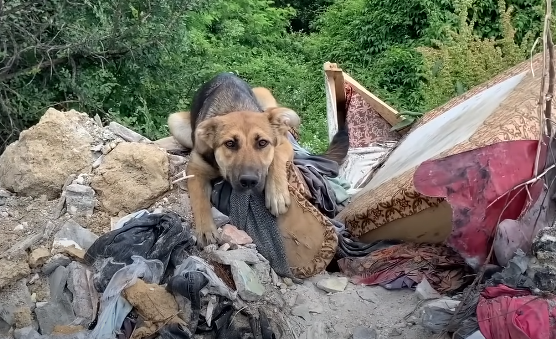
Some moments in life remain etched in memory, not because they were extraordinary in spectacle, but because they revealed the raw vulnerability and resilience of another living being. One such moment happened on a rainy afternoon when I encountered a small, abandoned animal on the side of a deserted street. She was scared, trembling, and alone — abandoned by circumstances she did not understand. When I approached her to help, she cried, her tiny voice filled with fear and confusion. That cry, heart-wrenching yet full of instinctive trust, became the starting point of a journey filled with compassion, patience, and an eventual bond that transformed both our lives.
The First Encounter
The day was gray, heavy clouds blanketing the sky, and the streets slick with rain. I was walking home from work when a faint sound caught my attention: a soft, pitiful cry that seemed almost drowned by the city’s background hum. My heart immediately went out to the source, and I followed the sound to a narrow alley. There, huddled against a cold wall, was a small, shivering creature — a young dog, no more than a few months old.
Her eyes were wide with fear, glistening with tears, and her tiny body quivered as if the chill of the rain had seeped into her very bones. She was filthy, covered in mud and debris, and the faint odor of neglect hung around her. The sight was gut-wrenching. She had clearly been abandoned, left to fend for herself with no one to protect her.
Her Fear and Distrust
As I knelt down to approach her, she flinched, backing away into the corner. Every instinct in her body screamed caution, yet her small cries revealed a desperate longing for help. Animals, especially young ones, often learn quickly to associate humans with either danger or protection. In her case, the association with humans had clearly been negative, leaving her hesitant to trust.
I remained still, speaking softly in a calm voice, careful not to make sudden movements. Her eyes followed me, darting between the safety of her corner and my outstretched hand. The first minutes were tense. She cried intermittently, a sound that pierced my heart — it was the sound of abandonment, confusion, and fear, all rolled into one small voice.
Patience and Gentle Persuasion
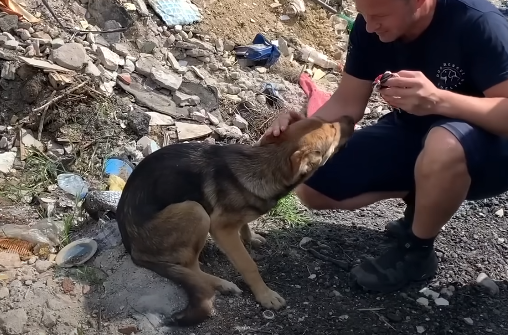
Rescuing an abandoned and frightened animal requires patience. There is no instant solution, no quick fix. I knew that rushing toward her would only increase her fear, so I took a slow approach, letting her observe me from a distance. I placed a small piece of food a few feet away, hoping to coax her out gently.
Minutes passed. She sniffed the food hesitantly, then backed away. I stayed still, watching her, my presence a silent promise that I meant no harm. Slowly, ever so slowly, she crept forward, her little nose twitching, eyes still wary but curiosity starting to override fear. It was a small victory — one that marked the beginning of trust.
The Moment She Let Me Help
Finally, after what felt like hours but was likely only a few tense minutes, she allowed me to touch her. My hand moved slowly toward her back, and she flinched, then froze. I paused, letting her adjust to the contact. Then, she did something unexpected: she leaned slightly into my hand.
Her tiny body shook, not from fear this time, but from relief. She cried softly again, but this time it was different — it was a mixture of release, vulnerability, and the beginning of trust. At that moment, I realized the magnitude of what had happened. She had chosen to accept help despite her fear, and I had the responsibility to protect her.
Cleaning, Comforting, and Care
Once she allowed me to lift her, I carried her to a dry and safe place. She trembled in my arms, and I wrapped her gently in a warm towel. Her small cries continued for a few minutes, a cathartic release of stress and fear. I could feel her tiny heartbeat, rapid and uneven, echoing the intensity of the moment.
Over the next few hours, I carefully cleaned her, removing the dirt and grime that had clung to her fur. She watched me intently, occasionally looking up with those wide, scared eyes, as if questioning every movement. I spoke softly, stroking her fur, letting her feel the warmth of a human touch without threat. The process was slow, deliberate, and filled with small successes — a soft lick in response to a gentle stroke, a slight wag of the tail, a momentary relaxation in her tense posture.
The First Signs of Trust
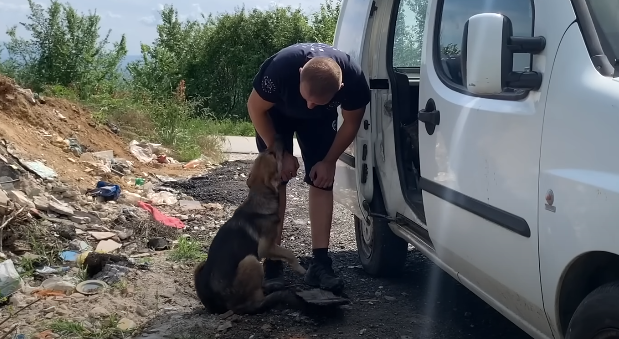
By the end of the day, the change was palpable. She no longer trembled constantly. Her cries had softened into occasional whimpers, less of fear and more of communication. She began to explore her new environment cautiously, testing the boundaries of safety I had created.
Her eyes, which had been wide with terror, now sparkled with curiosity. I realized then that trust, once broken by abandonment, could be rebuilt with patience, gentleness, and consistency. She had taken the first step toward believing that not all humans would harm her, and that some were capable of care and compassion.
Lessons Learned from Abandonment
Rescuing an abandoned and frightened animal teaches profound lessons:
- Patience is Essential: Trust cannot be forced. Every small victory matters, and rushing only undermines the fragile bond being rebuilt.
- Empathy Matters: Understanding fear from the perspective of the abandoned animal allows for better care and more effective rescue.
- Resilience is Remarkable: Despite abandonment, she showed an innate will to survive and eventually trust again. Animals often possess an emotional resilience that inspires humans.
- Compassion Creates Change: A single act of care can transform the trajectory of a vulnerable life. Her journey from fear to tentative trust is a testament to the power of kindness.
Long-Term Care and Bonding
Over the following weeks, our bond grew stronger. She became more playful, her cries transformed into soft barks or joyful yips, and she began to respond to affection with wagging tails and gentle nudges. Daily routines of feeding, grooming, and playing helped reinforce trust.
Every small interaction — a shared meal, a soft stroke, a protective embrace — became part of a healing process. She learned that humans could be allies, protectors, and companions rather than sources of fear.
Reflection on the Experience
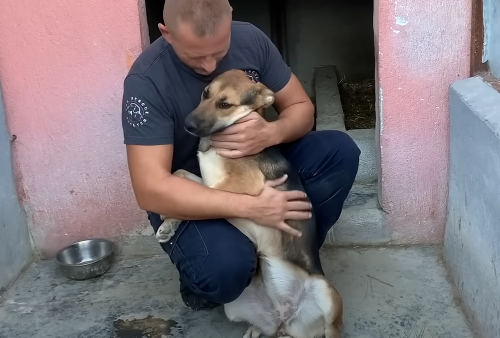
Looking back, that initial encounter — her cries, her trembling, her fearful eyes — remains a powerful reminder of the impact of abandonment. It also highlights the potential for compassion to heal trauma.
Animals, like humans, respond to care, patience, and understanding. The simple act of approaching a frightened, abandoned creature with empathy can transform fear into trust, despair into hope, and vulnerability into strength.
Conclusion
Abandoned and scared, she cried when I approached to help her — a sound that will forever echo in my memory. But that cry was not just a call for help; it was the beginning of a remarkable journey. It symbolized the fragility of trust, the pain of neglect, and the extraordinary capacity for resilience.
By listening, observing, and acting with care, I was able to help her transition from fear to trust. Her journey serves as a poignant reminder of the power of compassion, the importance of patience, and the potential for connection between humans and animals.
In the end, the story of that small, abandoned creature is not just about rescue; it’s about empathy, understanding, and the profound impact one caring individual can have on a life that was once left alone, scared, and crying.
Every time I see her now, playful and confident, I am reminded that even the smallest gestures of help can create lasting change — a lesson that extends far beyond the realm of rescue and into the very way we approach the world.
